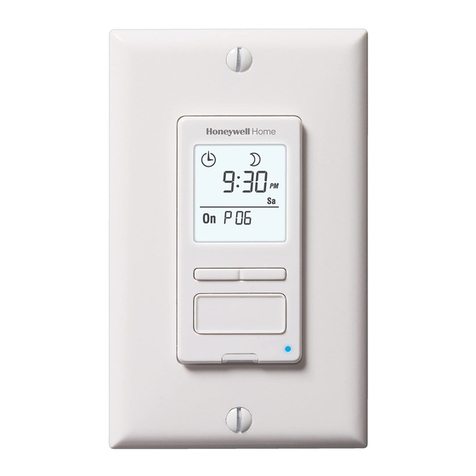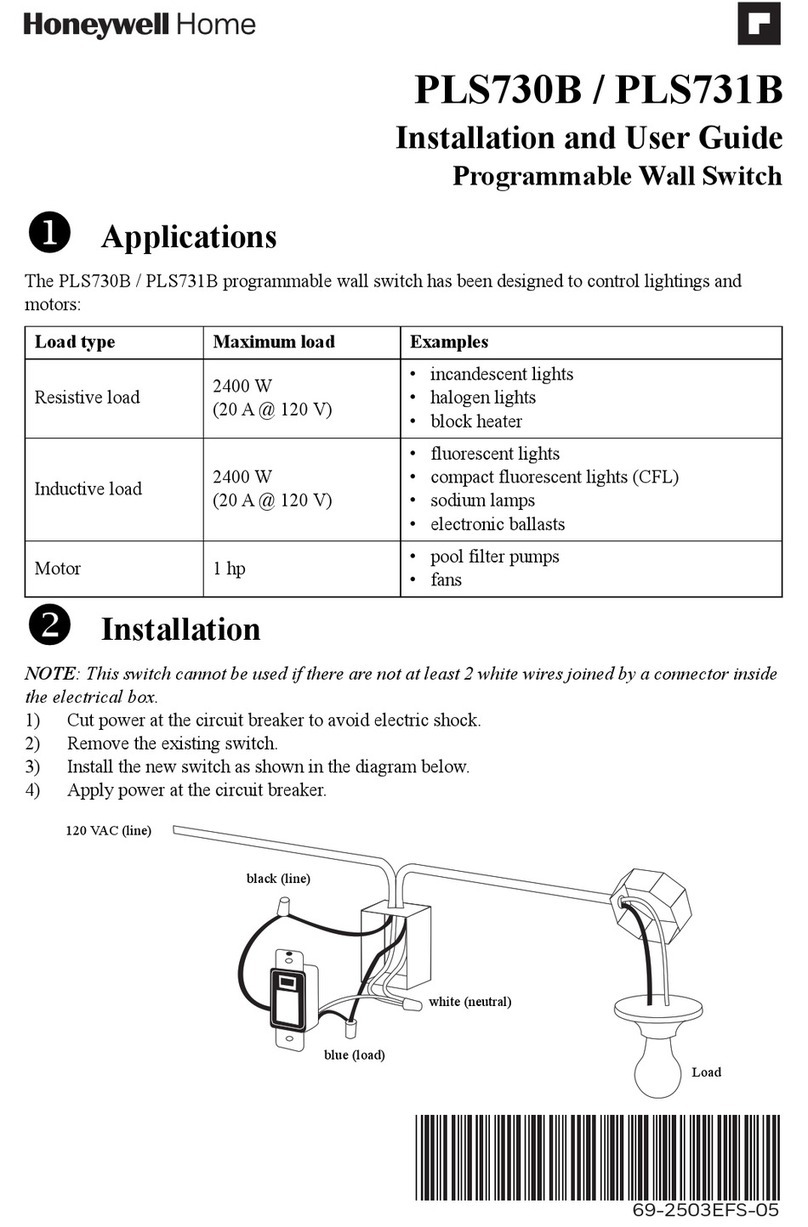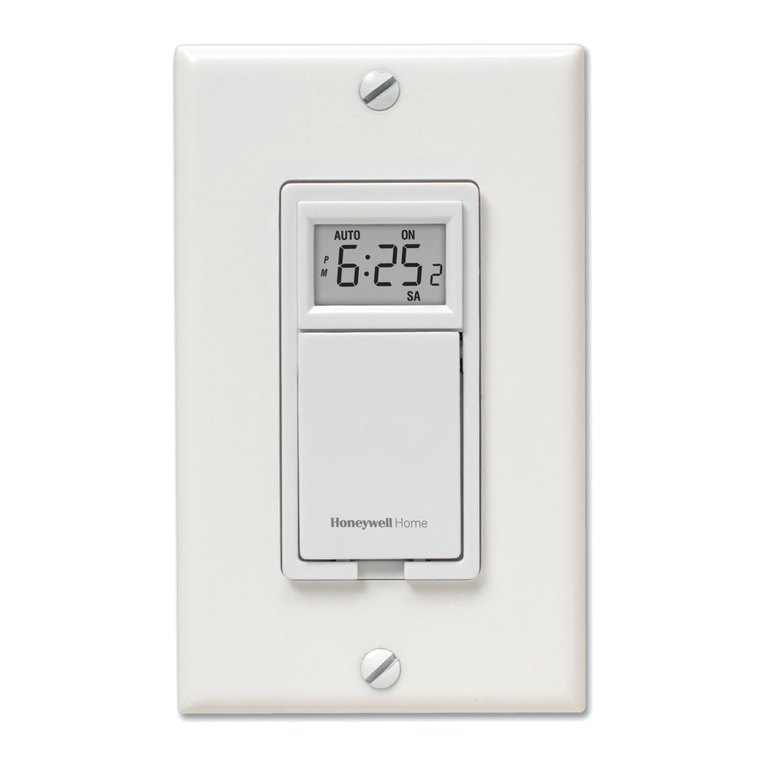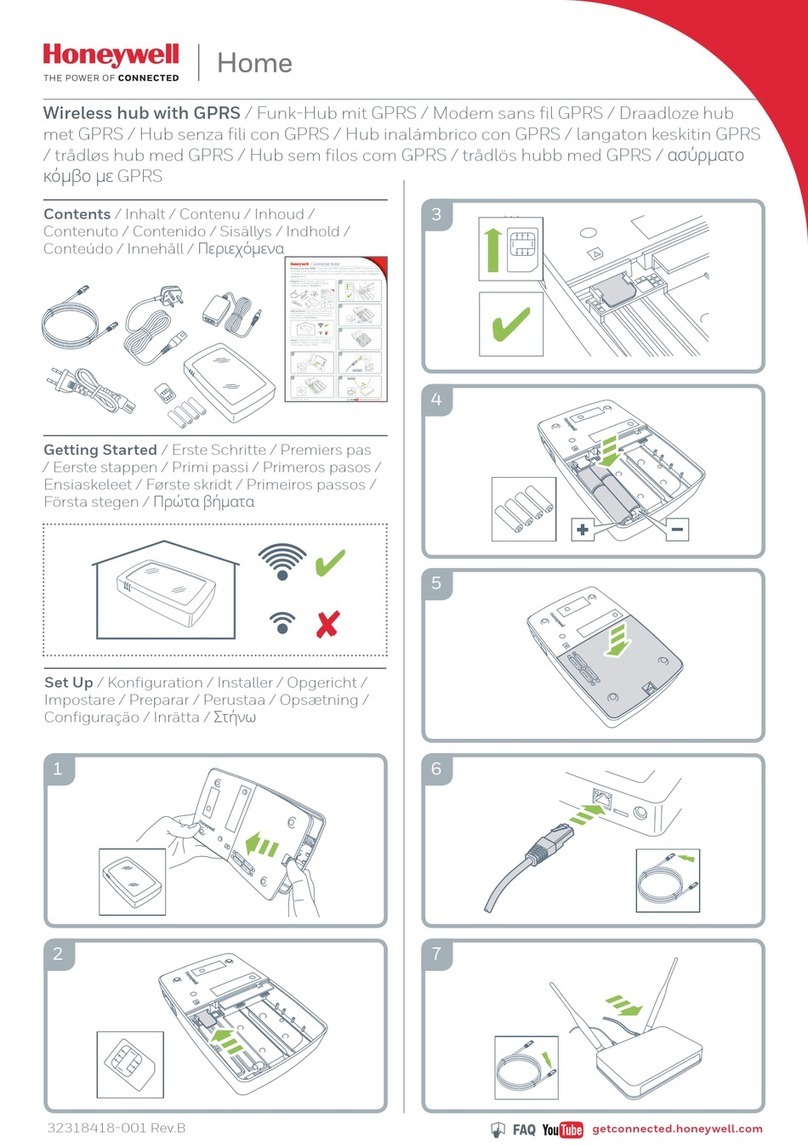
5800RPS
Wireless Roller Plunger Switch
STEP 1 STEP 5 & 6STEP 3 & 4STEP 2
Figure 3.
800-07873B 10/10 Rev. B
Before drilling any holes, make sure that successful
BATTERY CAUTION: Risk of fire, explosion and burns.
2 Corporate Center Drive, Suite 100
P.O. Box 9040, Melville, NY 11747
© 2020 Resideo Technologies, Inc.
www.resideo.com
Go/No Go transmission reception tests have been conducted.
Do not recharge, disassemble, heat above 212 F (100 C) or incinerate. Dispose
of used batteries promptly. Keep away from children.
oo
5800MICRA transmitters
Dimensions Dowel Package 0.750" diameter
Additional Info Dowel Lid 0.850" diameter x 0.060" thick
Wire Antenna 8" x 1/8" flexible antenna extends from sensor
Fits Cavity Depth 1.00" depth
Power Source 3.0V Lithium Coin Cell Battery CR1620
Temperature Range 10º to 120º F (-12º to 49º C)
Compatibility Doors Wood and Metal Frame
Note: Range may be reduced if used in metal frame doors.
This device complies with FCC Rules part 15. Operation is subject to the following two conditions:
1. This device may not cause harmful interference.
2. This device must accept any interference that may be received, including interference that may
cause undesired operation.
The user shall not make any changes or modifications to the equipment unless authorized by the
Installation Instructions OR User Manual.
Unauthorized changes or modifications could void the user's authority to operate the equipment.
FCC
Notice
Figure 2.
SPECIFICATIONS
Mark the selected location for the transmitter on the "hinge side" of the door
frame at least 4' above the floor.
Before drilling any holes, make sure that the successful Go/No Go transmission
tests have been conducted.
Drill hole at the location marked for the transmitter (3/4" diameter, at least
1-1/4" in depth).
Drill a second hole (1/4" in diameter, at least 8" in depth) at the center of the first
hole for antenna insertion or insert the antenna into the space between the door
frame and the stud framing.
Insert the antenna into the provided straw. This is to make the installation easy
and ensure the antenna will remain straight. Never coil or bunch up the
antenna.
Insert the transmitter and antenna assembly into the hole so that the
transmitter flange is flush with the surface of the door frame.
DO NOT hammer the transmitter into place with hard blows. Press into place
either by hand or simply by closing the door, which presses it into place.
Secure the transmitter by installing the two screws provided.
MOUNTING
1.
2.
3.
4.
5.
6.
7.
Observe correct polarity (see Figure 3 Step 3 & 4) and insert the fresh battery into the
battery holder (positive polarity is shown on the battery holder). Always use Energizer
or Panasonic brand batteries.
Slide the transmitter assembly back into its base by gently pulling on the antenna,
easing the assembly into place.
Snap the cap back onto the base, locking it into place.
Placing the antenna into the cavity first, reinsert the unit into its original mounting hole
in the door frame and secure the flange using the two screws previously removed.
BATTERY INSTALLATION & REPLACEMENT
Remove the transmitter from the door frame by removing the two screws from the
flange and prying the unit from the hole using the flat blade of a small screwdriver.
The transmitter must be removed from the door completely in order to refit the
unit back into the hole once the internal battery has been replaced.
Using the flat blade of a small screwdriver separate the transmitter assembly from
the base with a slight counter-clockwise twist. Once open, slide the cap with the
transmitter PC board assembly apart from the base. Pull the antenna through the
hole in the base just enough to allow the battery to be replaced. Do not pull the
antenna completely out of the base.
Carefully remove the old battery from its battery holder on the bottom of the PC
board
1.
2.
3.
4.
5.
6.
7.
TO THE INSTALLER
Regular maintenance and inspection (at least annually)
by the installer and frequent testing by the user are vital
to the continuous satisfactory operation of any alarm
system. The installer should assume the responsibility of
developing and offering a regular maintenance program
to the user, as well as acquainting the user with the proper
operation and limitations of the alarm system and its
component parts. Recommendations must be included for
a specific program of frequent testing (at least weekly) to
insure the system's operation at all times.
REFER TO THE lNSTALLATION INSTRUCTIONS FOR
THE RECEIVER / CONTROL WITH WHICH THIS DEVICE
IS USED FOR DETAILS REGARDING LIMITATIONS OF
THE ENTIRE ALARM SYSTEM.
FOR WARRANTY INFORMATION, PLEASE GO TO:
www.security.honeywellhome.com/warranty
U.S. Patent No. 6,737,969 | U.S. Patent No. 7,081,816
Ê800-07873B"Š
This product manufactured by Resideo and its affiliates.
The Honeywell Home Trademark is used under license from Honeywell International Inc.
The product should not be disposed of with other household waste. Check for the
nearest authorized collection centers or authorized recyclers. The correct disposal
of end-of-life equipment will help prevent potential negative consequences for the
environment and human health.
Any attempt to reverse-engineer this device by decoding proprietary protocols,
de-compiling firmware, or any similar actions is strictly prohibited.
























